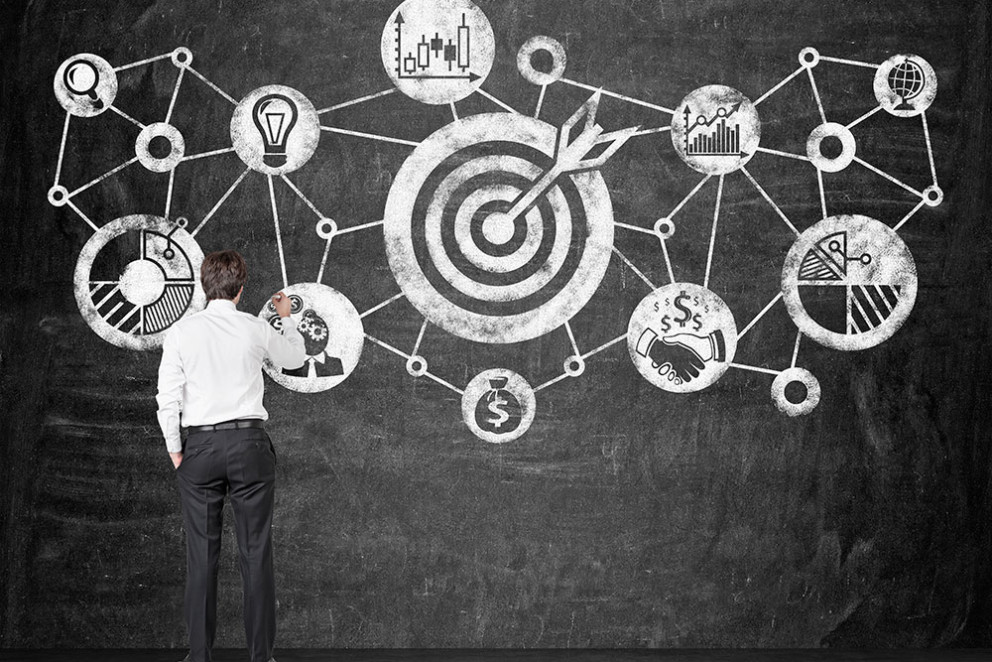Table of contents


Business Intelligence: Know the 5 Phases of the Data Analysis Process

Ester Maicas
03 Jan 2019



Ester Maicas
03 Jan 2019
Table of contents
New technologies are revolutionizing the way in which companies make their most important and strategic decisions. The last concept to join this revolution is Business Intelligence.This term refers to the strategies and tools that serve to transform information into knowledge with the aim of improving market studies and the process of business decision making.
“Business Intelligence analyses thousands of data to find out the strengths and weaknesses of companies”
All the information that Business Intelligence analyses come hand in hand with another of the great revolutions that new technology has brought to the business sector: Big Data. This technology captures large amounts of data sets which companies have in an unstructured way and that, until today, conventional tools could not cover during an analysisThus, while Big Data is able to collect the data that a company accumulates at a very high speed, Business Intelligence analyses it in an advanced and predictive way and gives results on which companies base a large part of their strategies.
You might be interested
You might be interested
Steps to develop a business plan

Nuria Nieva


You might be interested
You might be interested
Importance of target Audience

Soraya Albaladejo


You might be interested
You might be interested
Work in common areas, a growing trend in business centers

Marina Guerra


We have already seen how working with digital tools is revolutionizing strategies of companies but do you know what phases the Business Intelligence process goes through until it presents the final result? We show you the 5 most important:
What is happening around the company? Business Intelligence begins its process as an observer. Thanks to working with Big Data, a large amount of information can be treated and analysed. Information that sometimes does not seem to be related to the final strategy of a company, but that this tool uses and an advantage point and to differentiate from other conventional instruments of information analysis.
Being able to access large amounts of information is not relevant if we are not able to understand it. Therefore, Business Intelligence offers a deep analysis of the information obtained through cross referencing data.
In addition to observing and understanding, this new technology is capable of predicting what would happen to the company with its current strategy if the market was modified by some external cause. And the fact is that markets are constantly changing so being able to predict these changes gives a company tranquillity and extra serenity.
When the results of the analysis of the data are known, collaboration between the work teams of companies is necessary. This is the most crucial phase of all, since the interpretation of this given data will determine the company's success or failure in their strategies.
It is the last step of the process, the most anticipated. In the decision phase, the company shows the result of the analysis of the data with all its interpretations and simulations and, based on these outcomes, decides the direction of the new strategies of the company.More and more companies are betting on applying the techniques offered by new technologies, which are revolutionizing business strategies because of the capacity they offer to know more about customers, competitors and the company itself.
“Information is the petrol of the 21st century and data analytics the combustion engine” Peter Sondergaard
Written by

COO and Digital Manager in Lexington. In other words, a manager of managers! Our team player Ester, a trained mathematician with the most exceptional analytical mind, knows every detail about our workspaces, our internal processes and our team. She excels herself every day! Ester is the Chief Officer of so many Operations that her name is on everyone’s lips!
Get up to date with flex
Subscribe to our newsletter to make sure you don't miss anything. On trend content you’ll be interested in.
Contact us
Request information
Solicitar información free pass
Request a quote
Visit our spaces
Trabaja con nosotros
Contact us
Work in a flexible space.
Optimize on costs compared to a conventional office
Estimation of costs compared to conventional office hire
0 people Office for
Select
5 people
10 people
15 people
25 people
Select a number of people and we’ll show you the expenses included in our flexible office hire.
Conventional office
Operational costs and supply costs:
€/month
+ opening expenses
Flexible office
Operational costs and supply costs:
Included
No opening expenses
Included in the monthly bill
€517.01/person
0€
2.264,24 €/person
0€
523,69 €/person
0€
Guarantee bond
6 months
Deposit
2 months
Since
12 months
Since
1 month
2-6 months
2 months
Request a quote